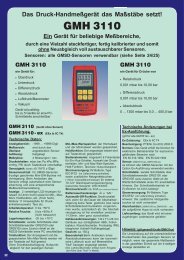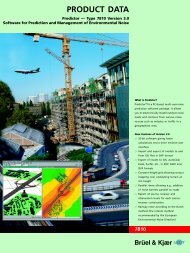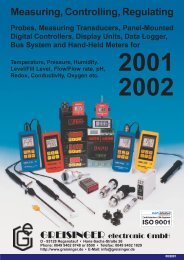1. Basic Concepts in Reliability Design - nl3prc
1. Basic Concepts in Reliability Design - nl3prc
1. Basic Concepts in Reliability Design - nl3prc
Create successful ePaper yourself
Turn your PDF publications into a flip-book with our unique Google optimized e-Paper software.
[2] <strong>Design</strong><strong>in</strong>g for <strong>Reliability</strong>3.5.4 ElectromigrationIt is well-known that apply<strong>in</strong>g a high current to the Al metal <strong>in</strong> an IC device can cause an open failure.This phenomenon is called electromigration and is becom<strong>in</strong>g an important failure mechanism as thescal<strong>in</strong>g of ICs gets larger.The follow<strong>in</strong>g describes the mechanism of electromigration <strong>in</strong> th<strong>in</strong> metal film. If a large current flows<strong>in</strong> a th<strong>in</strong> film, electron w<strong>in</strong>d force is applied to the metal atoms. As a result, Al atoms diffuse <strong>in</strong> thedirection of electron flow (from cathode to anode), form<strong>in</strong>g a void on the cathode side, and a hillock orwhisker on the anode side.An open failure on th<strong>in</strong> metal film can occur when the atomic flux <strong>in</strong> the metal achieves a positivedivergence. This divergence of atomic flux is caused by variations <strong>in</strong> temperature or current density,or by a triple po<strong>in</strong>t of Al gra<strong>in</strong> boundaries, for example, variable Al gra<strong>in</strong> size, 18) a temperature<strong>in</strong>crease due to heat generation <strong>in</strong>side the device, 19) or metal <strong>in</strong> contact with other material. 20)The electromigration lifetime of the th<strong>in</strong> metal film is generally expressed as the MTTF (mean time tofailure) as follows: 21)( Ea )MTTF = AJ−nexpkTwhere J is the current density, n is a constant relat<strong>in</strong>g to the current density, Ea is the activationenergy, T is the absolute temperature, k is Boltzmann’s constant and A is a constant relat<strong>in</strong>g to thematerial type, structure and size of the metal. From this expression it can be seen that the MTTF<strong>in</strong>creases with a decrease <strong>in</strong> current density or temperature. Also, the lifetime distributionapproximates to a logarithmic distribution with a low variance.Figure 3.17 shows an example of how to obta<strong>in</strong> the activation energy. A value of 0.6 eV is obta<strong>in</strong>ed forboth Al-Si and Al-Si-Cu. The lifetime of Al-Si-Cu metal is longer than that of Al-Si metal. The additionof Cu to Al suppresses gra<strong>in</strong> boundary diffusion, the dom<strong>in</strong>ant diffusion mechanism <strong>in</strong>electromigration.AI-Si-CuAI-Si100Ea = 0.6 eVMTF (arb. unit)101000/T (K)1<strong>1.</strong>8 2.0 2.2 2.4 2.6 2.8225 200 175 150 125 100 75Temperature (°C)Figure 3.17 Temperature dependency of electromigration lifetime of metal2-28





